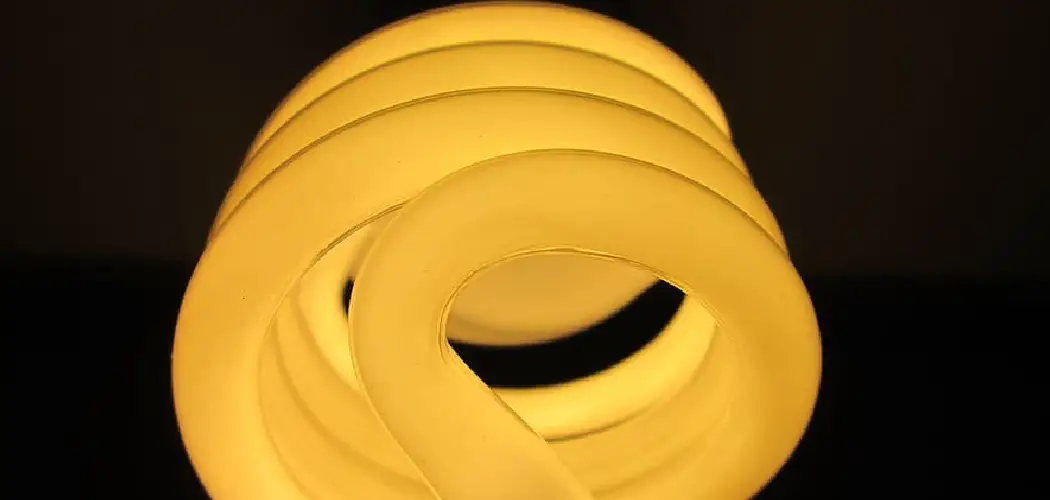LED lights offer more benefits than fluorescent lights, such as up to 80% more energy efficiency, a longer lifespan (up to five times longer), and brighter, whiter light. LEDs also produce less heat than traditional incandescent bulbs, making them safer to use. Converting your fluorescent light fixtures over to LED can save you money on electricity bills while providing a better lighting experience.
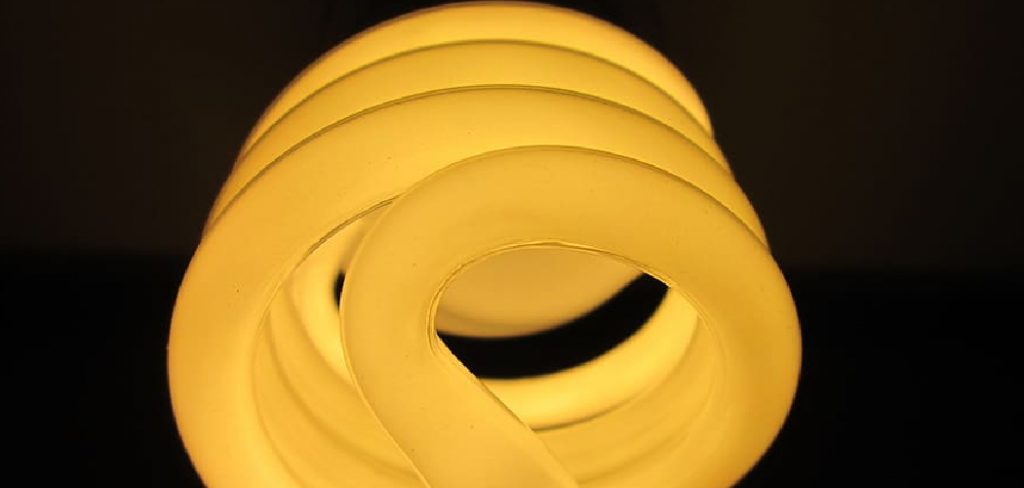
Converting a fluorescent light to LED offers many advantages. First and foremost, LEDs use much less energy than traditional fluorescent lights, which translates into lower energy bills for the homeowner or business owner.
Additionally, converting to LED lighting can help reduce environmentally harmful emissions as well as improve indoor air quality by significantly reducing Volatile Organic Compounds (VOCs). You can find step-by-step instructions on how to convert a fluorescent light to led in this blog article.
Tools You Will Need
- Screwdriver
- Wire nuts
- Electrical tape
- LED light fixture
- Glue gun or silicone caulk
- Hacksaw
- Drill and bit set
- Level
- Multimeter (optional)
- Pliers.
Step-by-step Instructions for How to Convert a Fluorescent Light to Led
Step 1: Inspect the Light Fixture
Make sure that the existing fluorescent light is not too old and in good condition. If so, you can proceed with converting it to LED. Before starting any work on the light fixture, make sure to turn off all power to it by disconnecting its wires from the switch box or removing fuses/circuit breakers.
Step 2: Remove the Ballast
Carefully remove the ballast from the light fixture, usually by unscrewing it or sliding it out of its mounting brackets. Disconnect all wires connected to the ballast and discard it in accordance with local disposal regulations. Some fixtures use integral ballasts, in which case you will have to replace the entire fixture with one that can accommodate LED bulbs.
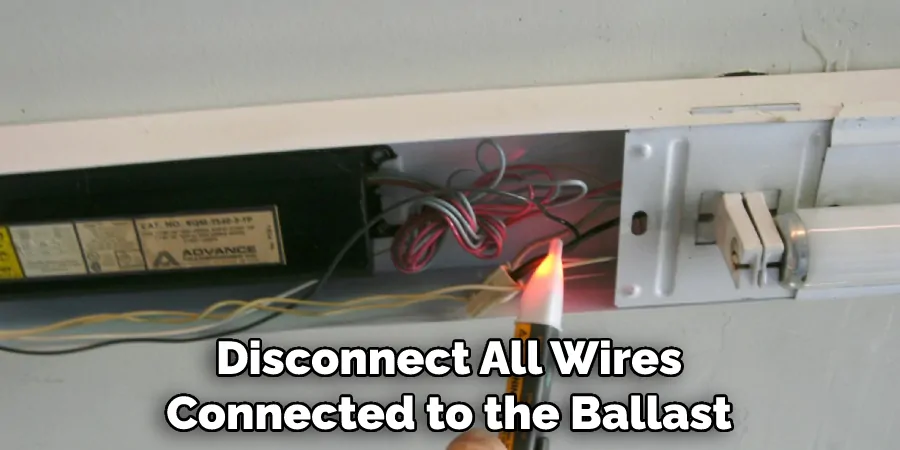
Step 3: Verify Proper Wiring
After removing the ballast, check whether all wiring is still properly connected and in good condition. Make sure to tighten any loose connections and inspect for any signs of wear or damage before continuing. Select appropriate LED bulbs for the light fixture, making sure to check the power requirements and size/shape of the socket. Then, insert each bulb into its respective socket and firmly secure them.
Step 4: Connect Wires to Neutral Line
Next, connect the white wire from an LED bulb to the neutral line, usually indicated by a white or gray wire. Now connect the black wire from an LED bulb to the hotline, usually indicated by a red or brass-colored wire. Make sure all connections are secure and properly tightened.
Step 5: Install New Ground Wire
Most LED bulbs require an additional ground wire that must be installed. Connect the light fixture’s green or bare copper wire from the LED bulb to the grounding screw. Once all wiring is connected and secured, turn on the power supply and check whether your new LED bulbs are working correctly. If so, proceed with installing the fixture covers and reassembling the light.
Step 6: Enjoy Your New LED Lights
You have successfully converted your fluorescent light to LED, bringing energy efficiency and modern lighting effects into your space. Now you can enjoy the benefits of LEDs without having to replace the entire light fixture. Finally, if you ever need to replace the LED bulbs, make sure that all power is turned off and proceed with the new installation following these steps.

Tips for How to Convert a Fluorescent Light to Led
- Make sure to turn off the power at the circuit breaker before you begin disassembling and installing the Led fixture. Wear appropriate safety glasses to protect your eyes from any debris or hot pieces that may fly when handling components.
- Use insulated tools such as pliers when touching metal parts, and keep your hands away from electrical components when the power is on.
- When wiring, take extra precautions to ensure no wires are exposed or touching each other, as this could cause a short circuit and fire.
- Take note of the fixture’s wattage rating to ensure you don’t overload it with an LED bulb with too high of a wattage rating.
- If the LED bulb is enclosed, make sure it is not too hot to touch before you begin the installation.
- Do not connect incompatible components together; for example, between an LED fixture and fluorescent system ballast.
- When wiring in series or parallel, pay attention to the voltage and wattage of each component so they match.
- If the LED bulb is enclosed, do not operate it without a heat sink to dissipate heat away from the bulb to avoid any risk of fire or damage caused by overheating.
Following these tips can help you complete your fluorescent-to-LED conversion safely and effectively.
Importance of How to Convert a Fluorescent Light to Led
- Energy Efficiency: LED lights use much less energy than fluorescent lights, which can help to reduce electricity bills significantly. LED bulbs also last longer and produce less heat, which reduces the need for air conditioning and helps further reduce electricity costs.
- Reduced Maintenance: LED lights are extremely durable and long-lasting compared to fluorescent lights, meaning they require less frequent replacement. This saves money on maintenance and labor costs and reduces the need to access hazardous spaces, such as those with high ceilings or tight crawlspaces, to change bulbs.
- Improved Quality of Lighting: LED lights offer brighter, better-quality lighting than fluorescent lights. LEDs are directional, meaning they can be pointed in specific directions to light up a room or space more efficiently.
- Contribution to a Greener Environment: LEDs use much less electricity than fluorescent lights, which reduces greenhouse gas emissions from power plants and helps reduce the global impact of climate change.
- Less Hazardous Disposal: LED bulbs contain no toxic materials, unlike fluorescents which contain mercury and other hazardous substances. This makes them much easier to dispose of without harming landfills or polluting the environment safely.
- Versatility: LED lights come in a wide range of colors, sizes, and shapes, making them suitable for any area or application. They can be used indoors and outdoors, in residential or commercial spaces, and for various purposes.
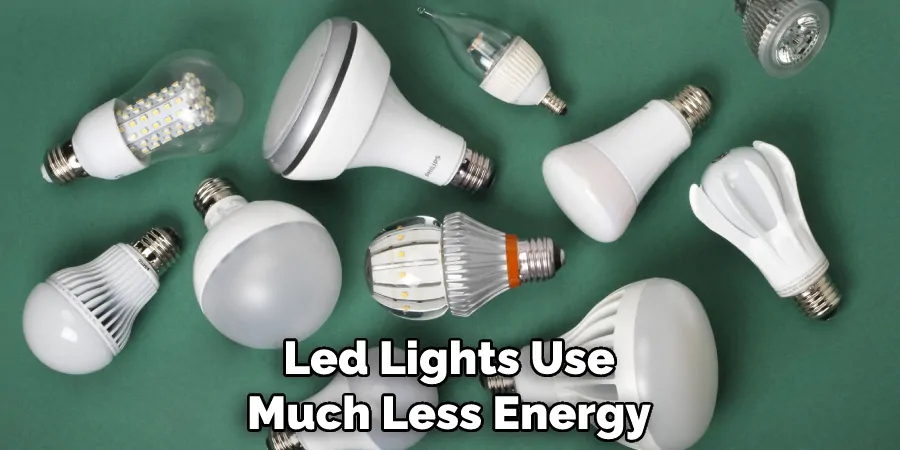
Converting fluorescent lights to LED is an effective way to save money on electricity costs, reduce hazardous waste disposal, improve the quality of lighting, and contribute to a greener environment.
Are There Any Safety Concerns That Come Along With Converting a Fluorescent Light to Led?
When converting a fluorescent light to LED, there are some safety concerns that need to be taken into consideration. The most important of these is the voltage difference between fluorescent and LED lighting. LEDs run on direct current (DC), while fluorescent lights require alternating current (AC).
This means that in order to convert a fluorescent light to LED, you must first install a rectifier to convert the AC current into DC. It is important to make sure that you are using a power supply and rectifier that will not deliver too much voltage to the LED lighting, as this could potentially damage it.
It is also important to ensure that wiring and connections are properly installed to prevent fire hazards or other safety risks. Finally, it is important to note that LED lighting may require additional wiring and fixtures in order to work properly. If you are unsure how to proceed, it is best to consult an electrician for help.
Working with electricity can be dangerous and should not be attempted by someone who is not experienced in doing so. By taking the proper safety precautions, you can ensure a successful conversion of your fluorescent light to LED.
Are There Any Financial Benefits Associated With Switching From Fluorescents to Leds?
The answer is yes. Replacing fluorescent lights with LED lights can provide considerable financial benefits. LEDs generally require less energy than their fluorescent counterparts and can last much longer, which means that you will be able to save money on your electricity bills in the long run.
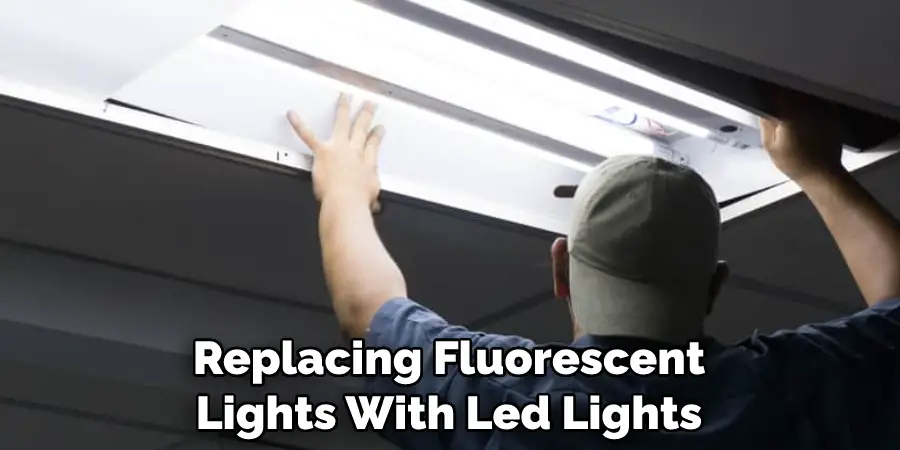
Additionally, they are also more cost-effective to install in the first place, as they are more efficient and require less labor. In addition to saving you money on energy bills, LED lights can also increase the value of your home since they produce a brighter light than fluorescent bulbs.
Ultimately, converting your existing fluorescent lighting fixtures to LEDs is an easy way to save energy and money while enhancing the quality of light in your home.
Are Any Additional Accessories or Tools Required to Convert a Fluorescent Light to Led Successfully?
The answer is yes, there are some additional accessories or tools that may be required in order to convert a fluorescent light to LED successfully. Depending on the type of fluorescent fixture and how you intend to mount your new LED fixtures, you may need some additional hardware.
LED Tube Lights require a ballast bypass power cord, which will connect the LED tube lights directly to the existing wiring in your light fixture. If you want to use a plug-and-play type of installation, you will also need an additional cord compatible with your chosen LED tube light.
If you are replacing Fluorescent Strip Lights with an LED strip, you may need additional clips or mounting hardware to affix the LED strip securely. Finally, if you are installing a new fixture or replacing an existing light bulb with an LED bulb, you will also need a compatible socket adapter for the base of the LED bulb. This is usually included in the packaging that comes with your LED bulbs.
What Common Problems Can Occur During the Conversion Process, and How Can You Avoid Them?
When converting a fluorescent light to LED, there are several potential problems that can arise. One of the most common issues is compatibility between the existing wiring and the new fixture or lighting module. To ensure a successful conversion, it’s important to double-check all components for compatibility before starting the installation process.
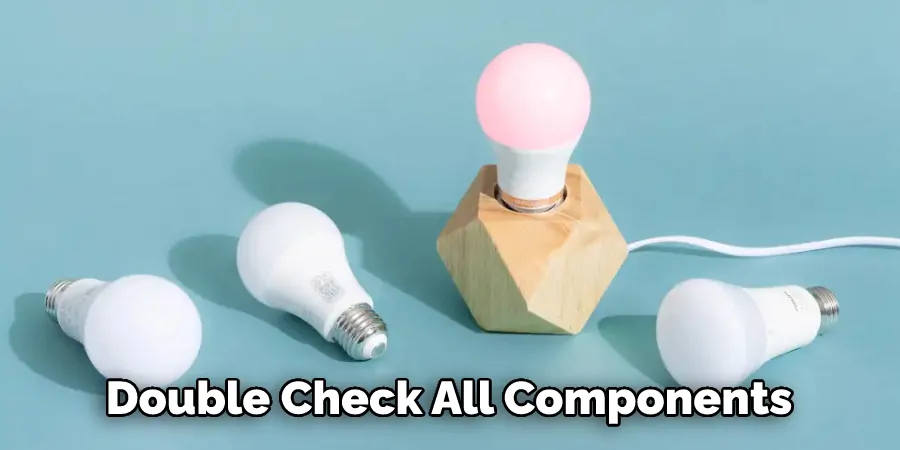
Another common challenge is the difference between LED lighting and fluorescent lighting when it comes to wattage. LEDs use less current than their fluorescent counterparts, so you may need to increase the wattage rating of your existing wiring in order to accommodate the new lights. Avoid this potential issue by using a qualified professional electrician who is knowledgeable about LED conversions.
Finally, ensure proper installation of the LED lights and fixtures. Be sure to follow all manufacturer instructions when installing, and use secure mounting methods that will ensure a safe, successful conversion. Any electrical work has the potential for danger; never attempt a DIY conversion if you are not experienced or knowledgeable in this area.
Conclusion
One of the main disadvantages of converting a fluorescent light to LED is that you may not get the same brightness and color accuracy levels. Fluorescent bulbs produce a good amount of light, but it is usually warm and yellowish in color. LEDs tend to be cooler and more blue-white in tone.
Another potential issue is that many fluorescent light fixtures are not designed to accommodate LED bulbs, so you may need to make changes or modifications in order to make the conversion.
In conclusion, converting a fluorescent light to an LED involves relatively simple steps that anyone can do. The first step is to remove the ballast and any other necessary components from the light fixture before wiring in the LED driver and mounting it onto the existing support. Afterward, you will need to connect your LED strip or bulb to the driver and secure them in place with wire caps.
I hope this article has been beneficial for learning how to convert a fluorescent light to led. Make Sure the precautionary measures are followed chronologically.

